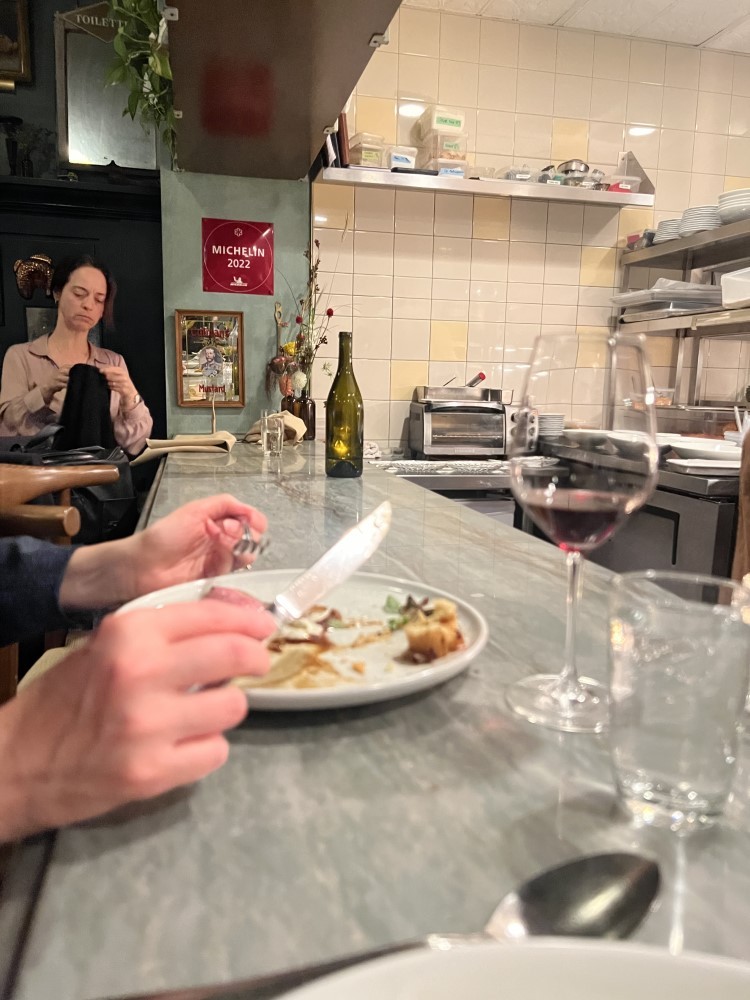For years, as a champion of the Minnesota food scene, I’ve contended that our restaurants and chefs could hold their own against the best in the nation’s culinary capitals. But let’s be honest – are we truly ready for the ultimate culinary test?
The Michelin Guide stands as the global benchmark for fine dining. A single Michelin star signifies exceptional cuisine and service, a true mark of excellence. Two stars suggest a restaurant worth a detour, while three stars denote an extraordinary destination, worthy of a special trip.
Gavin Kaysen, of Spoon & Stable fame, has openly encouraged Michelin Guide inspectors to visit Minnesota. The first North American Michelin Guide was established for New York in 2005 (Kaysen’s former culinary stomping ground). Now, Michelin Guides grace cities like San Francisco, Washington, D.C., Chicago, Toronto, Vancouver, and Miami/Orlando. Tourism boards have even sponsored Michelin’s expansion into regions of California, including Los Angeles, and most recently, Colorado.
Reports in The New York Times revealed that Colorado tourism boards collectively invested between $70,000 and $100,000 annually for three years to attract Michelin. Realistically, it’s unlikely our tourism sector would commit $350,000 to bring Michelin here. We haven’t even prioritized hosting culinary shows like “Top Chef.” Let’s face it.
But could we even compete if Michelin came? Colorado, with a slightly smaller metro area than ours, earned five one-star distinctions in its inaugural guide. Do the Twin Cities boast restaurants of that caliber?
Recently, I dined at St. Lawrence, a one-star restaurant in Vancouver, with my wife. Having experienced three-star establishments and several one-stars previously, I found St. Lawrence exceptional. The ambiance was relaxed, like a neighborhood bar, yet the service was knowledgeable, warm, approachable, and perfectly timed. The cuisine was a masterclass in technical precision serving exquisite flavors. Choosing a starter, main course, and dessert, the restaurant complemented these with additional courses, reminiscent of the dining experience at Restaurant Alma or The Bungalow Club. Notably, the tasting menu was priced at 125 Canadian dollars, roughly $91 USD.
Our meal began with Boursin cheese Gougères, followed by a duck liver foie gras flan with maple aspic – simply divine. An heirloom tomato tart, featuring thinly sliced tomatoes arranged in an artistic spiral within a delicate pastry crust, was visually and gastronomically stunning. Next, we enjoyed torch-seared smoked pink trout with sorrel vichyssoise and leeks.
The most surprising dish was a sweet corn creation – a buttery, salty, airy, almost foamy essence of corn. It captured the essence of corn on the cob without the kernels.
We also sampled a pâté en croûte, and for main courses, torch-cooked halibut and grilled lamb. Hopefully, this gives you a sense of St. Lawrence’s caliber. It’s one of nine one-star restaurants in Vancouver, a city of 660,000 (metro 2.5 million), similar in size to the Twin Cities but with considerably more business travel and affluence. Vancouver’s position as a gateway to Asia attracts significant international investment.
So, with that context, here are my Twin Cities restaurant recommendations that could earn Michelin recognition:
Twin Cities Restaurants Deserving of Michelin Stars
Two-Star Restaurant Potential:
Demi: Demi stands out as a potential two-star recipient. Its exceptional cuisine unequivocally meets Michelin’s criteria. The intimate and distinctive setting further enhances its appeal, making it unique within the Twin Cities and nationally. Is Demi worth a special trip? Absolutely, in my opinion.
Potential One-Star Restaurants:
Michelin’s one-star designation often favors tasting menu formats, which might exclude some of our excellent à la carte establishments. However, if Michelin were to consider the Twin Cities, some restaurants might adapt. Currently, these are my picks for one-star contenders within this Twin Cities Restaurant Guide:
Restaurant Alma: A clear frontrunner. Alma’s tasting menu format, commitment to local and regional ingredients, creativity, and consistent excellence under Alex Roberts’ leadership for decades make it a no-brainer for Michelin consideration.
Meritage: Meritage offers a compelling combination of a relaxed oyster bar and a refined main dining room. The flawlessly executed French classics, coupled with one of the Midwest’s premier wine lists curated by Desta Klein and Chef Russel Klein’s incredible flavors, place Meritage firmly in the Michelin conversation.
Travail Kitchen and Amusements: Travail remains one of Minnesota’s most innovative and enjoyable fine dining experiences. Its inventiveness, creativity, and striking venue undoubtedly position it as a Michelin prospect.
Kaiseki Furukawa: Chef Shigueyuki Furukawa is the Midwest’s only Kaiseki master. Kaiseki Furukawa offers a truly unique ten-course immersion in art and culinary culture, a very special experience worthy of recognition.
Myriel: Karin Tomlinson’s culinary artistry beautifully connects her passion for farming with her deep technical expertise. Myriel’s dishes are a testament to this harmonious blend, making it a strong Michelin contender.
Owamni by The Sioux Chef: While Owamni’s culinary consistency might still be evolving, the unparalleled quality of ingredients and the uniquely indigenous dining experience make it deserving of Michelin’s attention and certainly a vital inclusion in any Twin Cities restaurant guide.
Denver’s culinary scene seemed underwhelmed with only five one-star restaurants. My Twin Cities list boasts seven potential stars. Have I overlooked anyone? And ultimately, does Michelin recognition even matter for the Twin Cities?
Our tourism priorities appear geared towards large-scale events rather than cultivating food tourism. While events like the U.S. Gymnastics Olympics trials and past Super Bowls bring massive short-term influxes of visitors, food tourism offers a more sustained and consistent stream of visitors. I believe investing in food tourism would contribute more to business recruitment and long-term relocation than fleeting events. Perhaps I’m biased, but I strongly advocate for prioritizing culinary tourism to showcase the incredible Twin Cities restaurant scene.

